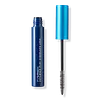What's inside
What's inside
 Key Ingredients
Key Ingredients

 Benefits
Benefits

 Concerns
Concerns

 Ingredients Side-by-side
Ingredients Side-by-side

Water
Skin ConditioningAcrylates/Ethylhexyl Acrylate Copolymer
Copernicia Cerifera Wax
Glyceryl Stearate
EmollientPolyisobutene
Synthetic Beeswax
Emulsion StabilisingStearic Acid
CleansingKaolin
AbrasiveAcrylates Copolymer
Tromethamine
BufferingButylene Glycol
HumectantTocopheryl Acetate
AntioxidantPantethine
EmollientPanthenol
Skin ConditioningLauroyl Lysine
Skin ConditioningCholesterol
EmollientPhytantriol
HumectantMethicone
EmollientGlyceryl Caprylate
EmollientVp/Hexadecene Copolymer
Silica
AbrasiveNylon-6
Laureth-20
EmulsifyingLaureth-21
CleansingLaureth-4
EmulsifyingAcacia Senegal Gum
MaskingHydroxyethylcellulose
Emulsion StabilisingSteareth-2
EmulsifyingSteareth-21
CleansingTrideceth-6 Phosphate
EmulsifyingPvp
Emulsion StabilisingAmmonium Acrylates Copolymer
Polyester-5
1,2-Hexanediol
Skin ConditioningSimethicone
EmollientDipropylene Glycol
HumectantCaprylyl Glycol
EmollientLinoleic Acid
CleansingIsostearic Acid
CleansingPhenethyl Alcohol
MaskingHydrogenated Lecithin
EmulsifyingDisodium EDTA
Tetrahexyldecyl Ascorbate
AntioxidantChloroxylenol
AntimicrobialSodium Dehydroacetate
PreservativePhenoxyethanol
PreservativePotassium Sorbate
PreservativeMica
Cosmetic ColorantCI 77891
Cosmetic ColorantCI 77491
Cosmetic ColorantCI 77499
Cosmetic ColorantCI 77492
Cosmetic ColorantCI 77000
Cosmetic ColorantCI 77163
Cosmetic ColorantCI 77266
Cosmetic ColorantCI 42090
Cosmetic ColorantCI 77400
Cosmetic ColorantCI 75470
Cosmetic ColorantCI 77289
Cosmetic ColorantCI 77288
Cosmetic ColorantCI 77510
Cosmetic ColorantCI 77007
Cosmetic ColorantCI 19140
Cosmetic ColorantWater, Acrylates/Ethylhexyl Acrylate Copolymer, Copernicia Cerifera Wax, Glyceryl Stearate, Polyisobutene, Synthetic Beeswax, Stearic Acid, Kaolin, Acrylates Copolymer, Tromethamine, Butylene Glycol, Tocopheryl Acetate, Pantethine, Panthenol, Lauroyl Lysine, Cholesterol, Phytantriol, Methicone, Glyceryl Caprylate, Vp/Hexadecene Copolymer, Silica, Nylon-6, Laureth-20, Laureth-21, Laureth-4, Acacia Senegal Gum, Hydroxyethylcellulose, Steareth-2, Steareth-21, Trideceth-6 Phosphate, Pvp, Ammonium Acrylates Copolymer, Polyester-5, 1,2-Hexanediol, Simethicone, Dipropylene Glycol, Caprylyl Glycol, Linoleic Acid, Isostearic Acid, Phenethyl Alcohol, Hydrogenated Lecithin, Disodium EDTA, Tetrahexyldecyl Ascorbate, Chloroxylenol, Sodium Dehydroacetate, Phenoxyethanol, Potassium Sorbate, Mica, CI 77891, CI 77491, CI 77499, CI 77492, CI 77000, CI 77163, CI 77266, CI 42090, CI 77400, CI 75470, CI 77289, CI 77288, CI 77510, CI 77007, CI 19140
Water
Skin ConditioningCera Alba
EmollientSynthetic Beeswax
Emulsion StabilisingGlyceryl Stearate
EmollientGlycerin
HumectantCopernicia Cerifera Cera
EmollientDimer Dilinoleyl Dimer Dilinoleate
EmollientStearic Acid
CleansingPalmitic Acid
EmollientEthylhexyl Polyhydroxystearate
EmollientPolyglyceryl-6 Polyricinoleate
EmulsifyingJojoba Esters
EmollientAcacia Senegal Gum
MaskingPanthenol
Skin ConditioningBenzyl Alcohol
PerfumingCaprylyl Glycol
EmollientSodium Hydroxide
BufferingXanthan Gum
EmulsifyingCaprylhydroxamic Acid
Arginine
MaskingLauric Acid
CleansingMyristic Acid
CleansingArachidic Acid
CleansingOleic Acid
EmollientTocopherol
AntioxidantWater, Cera Alba, Synthetic Beeswax, Glyceryl Stearate, Glycerin, Copernicia Cerifera Cera, Dimer Dilinoleyl Dimer Dilinoleate, Stearic Acid, Palmitic Acid, Ethylhexyl Polyhydroxystearate, Polyglyceryl-6 Polyricinoleate, Jojoba Esters, Acacia Senegal Gum, Panthenol, Benzyl Alcohol, Caprylyl Glycol, Sodium Hydroxide, Xanthan Gum, Caprylhydroxamic Acid, Arginine, Lauric Acid, Myristic Acid, Arachidic Acid, Oleic Acid, Tocopherol
Ingredients Explained
These ingredients are found in both products.
Ingredients higher up in an ingredient list are typically present in a larger amount.
Acacia Senegal Gum has skin soothing, thickening, and formulation stabilizing properties. It comes from the Acacia tree that is native to sub-Saharan Africa.
Caprylyl Glycol is a humectant and emollient, meaning it attracts and preserves moisture.
It is a common ingredient in many products, especially those designed to hydrate skin. The primary benefits are retaining moisture, skin softening, and promoting a healthy skin barrier.
Though Caprylyl Glycol is an alcohol derived from fatty acids, it is not the kind that can dry out skin.
This ingredient is also used as a preservative to extend the life of products. It has slight antimicrobial properties.
Learn more about Caprylyl GlycolGlyceryl Stearate is a mix of glycerin and stearic acid.
It is used to stabilize the mixing of water and oil ingredients. By preventing these ingredients from separating, it can help elongate shelf life. It can also help thicken the product's texture.
As an emollient, it helps soften skin and supports barrier-replenishing ingredients.
In cosmetics, Glyceryl Stearate is often made from vegetable oils or synthetically produced.
This ingredient may not be fungal-acne safe
Fun fact: The human body also creates Glyceryl Stearate naturally.
Learn more about Glyceryl StearatePanthenol is a common ingredient that helps hydrate and soothe the skin. It is found naturally in our skin and hair.
There are two forms of panthenol: D and L.
D-panthenol is also known as dexpanthenol. Most cosmetics use dexpanthenol or a mixture of D and L-panthenol.
Panthenol is famous due to its ability to go deeper into the skin's layers. Using this ingredient has numerous pros (and no cons):
Like hyaluronic acid, panthenol is a humectant. Humectants are able to bind and hold large amounts of water to keep skin hydrated.
This ingredient works well for wound healing. It works by increasing tissue in the wound and helps close open wounds.
Once oxidized, panthenol converts to pantothenic acid. Panthothenic acid is found in all living cells.
This ingredient is also referred to as pro-vitamin B5.
Learn more about PanthenolStearic Acid is a fatty acid. It is an emollient, emulsifier, and texture enhancer.
As an emollient, stearic acid helps soften skin. It aids the skin's protective barrier by preventing water loss. It also provides a gentle cleansing effect without stripping away natural oils.
Stearic acid may also be used to enhance the texture of products. It can add volume and stabilize ingredients such as water and oil. This can help water and oil ingredients from separating.
Sources of stearic acid include animal or vegetable fats/oils such as coconut or shea. It can be naturally found in butter, cocoa butter, shea butter, vegetable fats, and animal tallow.
This ingredient may not be Malassezia folliculitis, or fungal-acne safe.
Learn more about Stearic AcidSynthetic beeswax is created to be identical in structure to beeswax. It possesses the same occlusive and emulsion properties.
A blend of fatty acid esters, fatty acids, and alcohols are used to create synthetic beeswax. Whether or not this ingredient is vegan depends on the source. Sometimes, lanolin is used for its creation.
This ingredient may not be Malassezia folliculitis, or fungal-acne safe.
Learn more about Synthetic BeeswaxWater. It's the most common cosmetic ingredient of all. You'll usually see it at the top of ingredient lists, meaning that it makes up the largest part of the product.
So why is it so popular? Water most often acts as a solvent - this means that it helps dissolve other ingredients into the formulation.
You'll also recognize water as that liquid we all need to stay alive. If you see this, drink a glass of water. Stay hydrated!
Learn more about Water